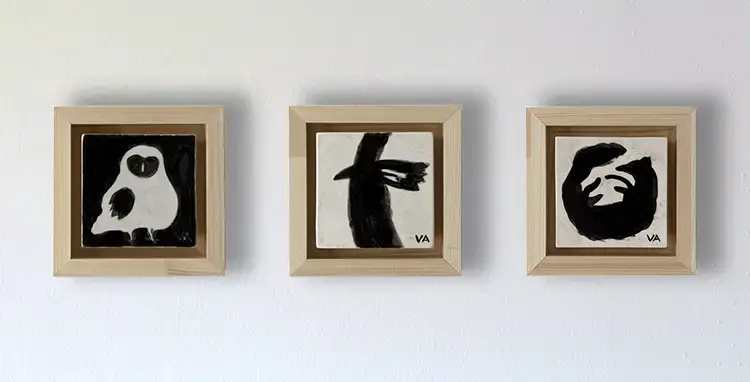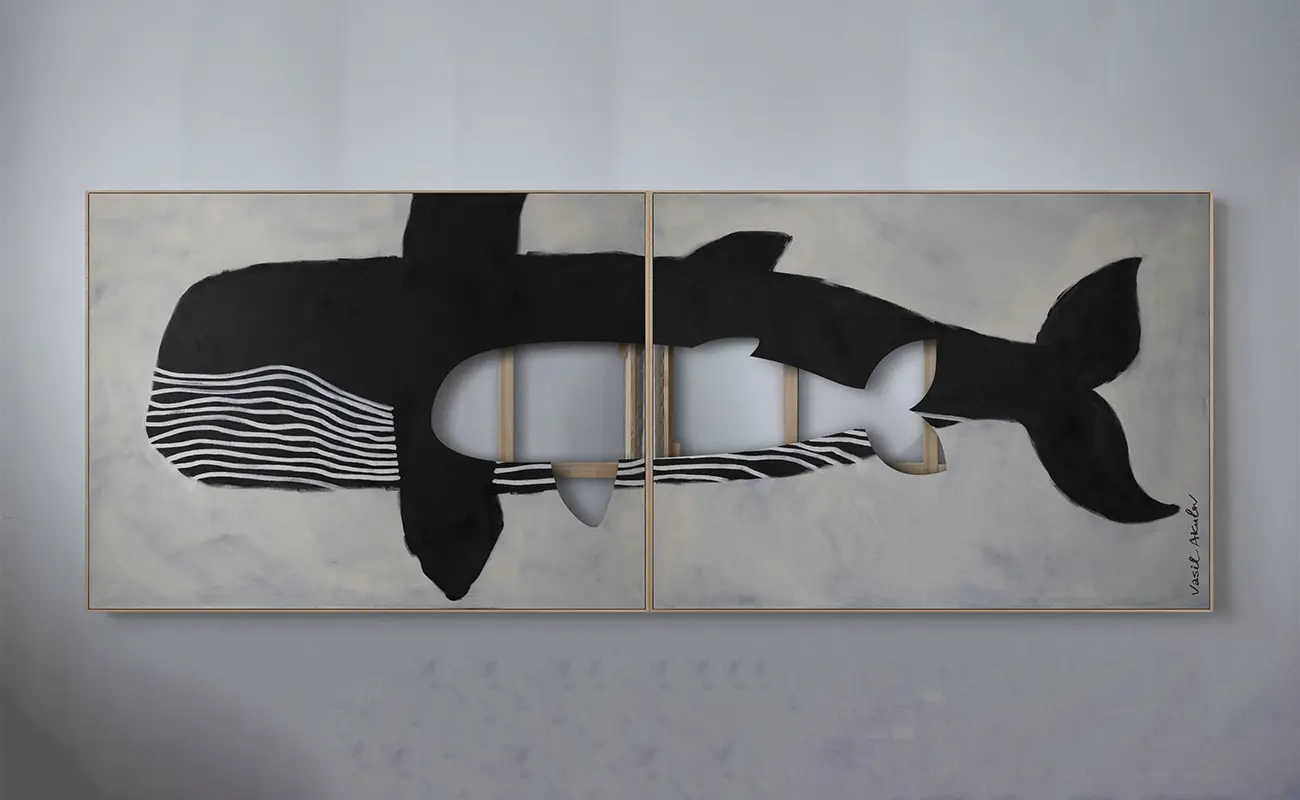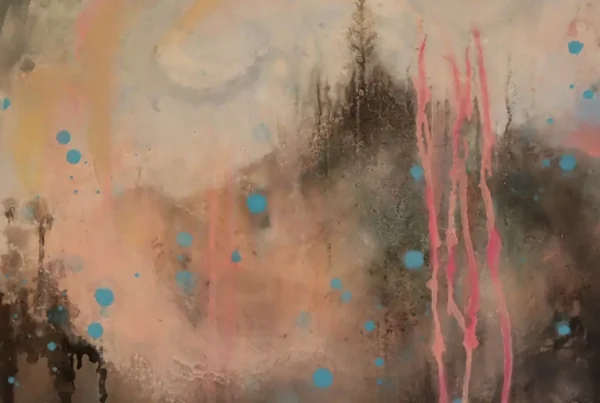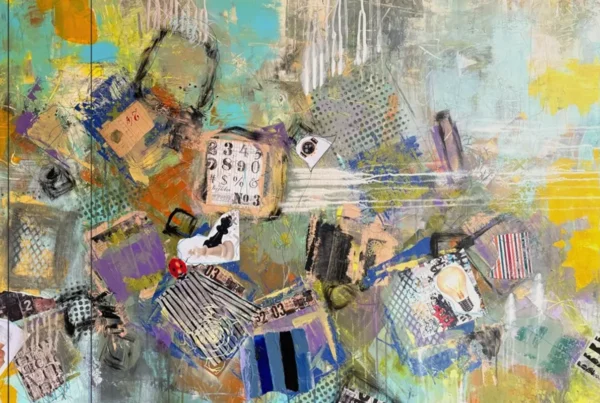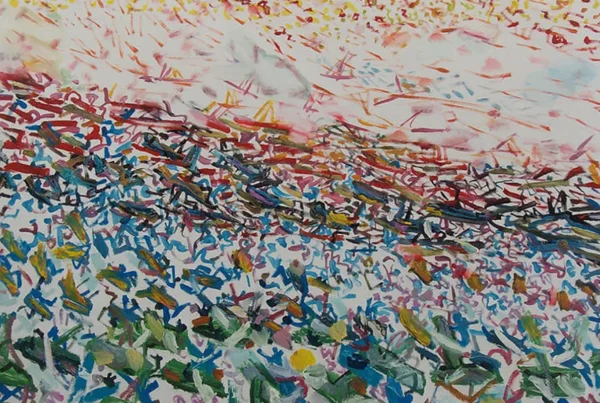“Through minimalist visual language and tactile materials, I create contemplative spaces that invite reflection on our biosphere’s fragility.”
Monochrome as a Mirror: Material Language and Ecological Urgency
Vasil Akulov stands at a distinct crossroad in contemporary visual art, where austere aesthetics intersect with ecological grief. Through a disciplined use of black-and-white palettes, Akulov constructs meditative works that examine humanity’s relationship with the natural world—not through overt narratives, but via the spaces left empty, the forms suggested rather than shown. His evolution as an artist began in the orbit of graphic design and classical painting, eventually pivoting toward a deeper investigation into environmental fragility. What emerged from this pivot is a stark, introspective visual language—one in which minimalism is neither trend nor style, but necessity. By stripping away the superfluous, he forces attention to what remains: a sobering reflection of biospheric loss rendered in oil and porcelain.
Rather than presenting nature as an external subject, Akulov embeds it directly into the fabric of his work. This is most apparent in his commitment to tactility—whether it be in the impasto-heavy surfaces of his canvases or the fragile finish of his porcelain panels. His pieces don’t simply depict ecological concerns; they materialize them. Every cut-out, every matte black silhouette becomes a subtle confrontation with extinction, exploitation, and disappearance. In this sense, Akulov’s work functions as a kind of visual philosophy—one rooted in absence as much as presence. His interest in voids, inspired by architectural concepts of negative space, has evolved into a signature artistic device: the cut-out technique. Here, form is not applied but removed, allowing emptiness to articulate the narrative more powerfully than solid pigment could.
At the heart of his practice is the recognition that the current ecological crisis is inseparable from cultural amnesia. Through his art, Akulov seeks not only to memorialize the vanishing but to question the cultural frameworks that enable this vanishing. His minimalist compositions are carefully constructed to operate both as visual artworks and conceptual propositions. This double function—where aesthetics confront ethics—positions his work within a growing movement of artists who view their studios not as sanctuaries from crisis, but as instruments of reckoning. In rendering the void visible, Akulov challenges viewers to see not just what has been lost, but the conditions that made loss seem inevitable.
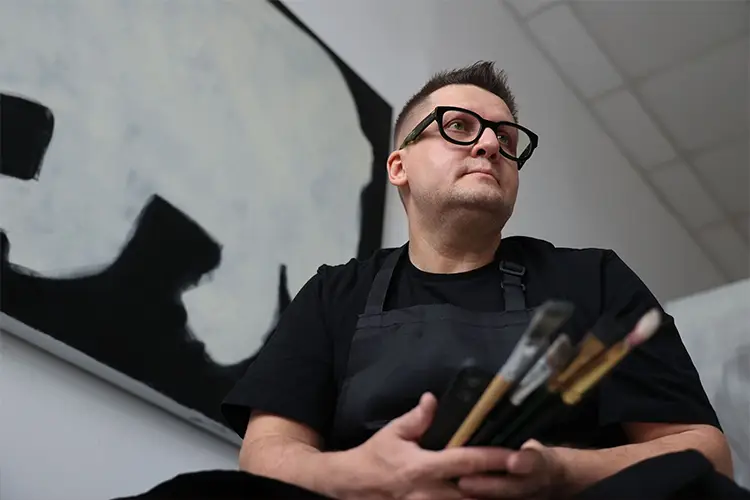
Vasil Akulov: Presence Through Absence
A defining feature of Vasil Akulov’s artistic philosophy lies in his refusal to treat absence as emptiness. Nowhere is this more palpable than in his monumental piece Blue Whale (3.2 x 1.2 meters), which centers on a void shaped like a whale calf. By physically removing part of the canvas to create this absence, Akulov invites viewers to encounter the form not as painted subject, but as a perceptual absence—an absence that aches with meaning. The visual paradox of confronting something that isn’t there becomes a haunting metaphor for extinction itself. What initially appears as an homage to the majestic whale becomes, on closer inspection, a lament for what is no longer—or soon may not be. The work’s dark tonal fields and rough textures intensify this duality, transforming the canvas into a memorial space where material presence and conceptual absence converge.
Akulov’s aesthetic is grounded in black and white not as a stylistic limitation but as a universal visual code. Within this restricted palette, he discovers infinite variation. Oil paint, with its ability to build thick, textural layers, allows him to explore gradations of darkness, while matte surfaces serve to absorb light, imbuing his pieces with a sculptural quality. This sculptural effect is further emphasized through his use of impasto, which offers not just visual but tactile engagement. These surfaces are never flat; they breathe and ripple with unseen tension. When juxtaposed with his porcelain works—mounted on textured wooden frames—the dialogue becomes more expansive. The wooden borders reference both institutional display formats and the rough intrusion of human civilization into natural environments, while the porcelain itself straddles a line between durability and fragility, offering a fitting allegory for threatened ecosystems.
The porcelain panels are not auxiliary works but critical components of his larger artistic system. Featuring stark black animal silhouettes on white ceramic, they resonate with his larger canvases while introducing a different material narrative. The paradox of porcelain—hard yet delicate, enduring yet vulnerable—mirrors the contradictions of our time. These animal forms are not portraits but presences, rendered ghostly by their stylized reduction and rigid form. In these silhouettes, Akulov captures the spectral echo of life pushed to the edge. It is this ongoing interplay—between permanence and vulnerability, texture and void, oil and porcelain—that gives his practice its unique emotional and conceptual intensity.
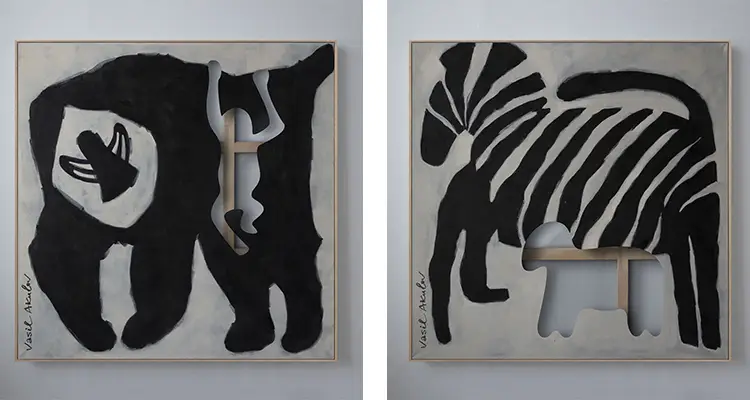
Silent Structures: Space, Light, and the Tools of Reflection
Vasil Akulov’s studio is not merely a workspace but a sanctuary of clarity, precision, and disciplined quiet. Located within a historic mansion in the heart of the city, the studio functions as both refuge and laboratory, centered around a grand easel that basks in steady northern light. This architectural positioning is no accident; the ambient conditions are chosen to heighten tonal perception and support the subtle gradations of black that characterize his work. Natural light, especially in its cooler manifestations, is fundamental to his process, aiding in the construction of visual depth and shadow nuance. The studio’s minimal arrangement—antique side tables, organized brushes, and a curated array of black pigments—echoes the aesthetic restraint of his finished pieces, creating a space where distraction has no place and focus reigns.
Absolute silence governs Akulov’s creative hours. He deliberately excludes music and electronic interruptions, preferring instead the ambient murmur of city life filtering through large windows. This subtle soundscape becomes an inadvertent collaborator, informing his studies of rhythm and contrast in shadow patterns. His mornings are particularly sacred; it is during this time that the interplay of light and canvas reaches its most articulate state. The quiet, combined with the heightened sensory awareness demanded by his monochrome practice, cultivates an atmosphere where introspection and technical rigor merge seamlessly. It’s not merely a routine—it’s a deliberate structure built to sustain the deep conceptual labor his work requires.
This studio ritual is not separate from the content of Akulov’s work but deeply enmeshed within it. The stripped-down environment parallels the subtractive process that defines his visual language—cut-outs, voids, and tonal shifts achieved through reduction rather than accumulation. The controlled conditions of his studio serve to heighten his sensitivity to material nuance and spatial composition. Even the architecture of the space contributes to his exploration of negative space and silhouette. In this way, his physical surroundings become both framework and extension of his creative method, allowing him to explore the delicate balance between form and formlessness, structure and disappearance. The result is a practice where every environmental choice—from light angle to brush texture—contributes to a unified conceptual and aesthetic pursuit.
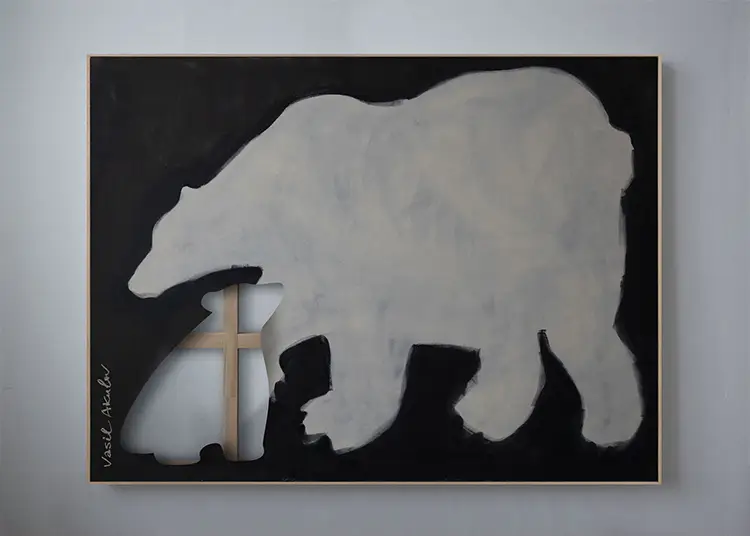
Vasil Akulov: Archiving the Vanished
At the core of Vasil Akulov’s current vision lies an ambitious project titled Archive of Disappearing Species—a work that seeks not to collect artifacts, but to catalog absence itself. This installation will center on porcelain tile cut-outs, arranged to function as what he describes as an “anti-museum”—a space where the missing are given form not through depiction, but through their voids. Rather than offering comfort through preservation, the installation confronts visitors with loss that can no longer be reversed. This inversion of traditional museological logic is powerful: by placing focus on absence, the installation critiques the impulse to curate without acting, to remember without changing course. Each tile becomes both artwork and evidence, part of a growing visual record of the sixth mass extinction—an unfolding tragedy Akulov insists must be felt, not just understood.
Through this project, Akulov hopes to dissolve the artificial boundaries between art and activism. He believes that art must not only illustrate ecological issues but physically embody them. His use of porcelain, already a metaphor for the fragile yet enduring aspects of life, becomes even more charged in this context. Black cut-outs of now-endangered or already-extinct species stand not as decoration but as ethical prompts. The starkness of these forms, rendered with exacting simplicity, creates a powerful tension between the beauty of their design and the horror of their disappearance. In aligning his work with this deeper political and environmental urgency, Akulov joins a lineage of artists who view creativity as a force capable of cultural reorientation.
Quoting Joseph Beuys—“Art is the only truly revolutionary force”—Akulov positions his practice within a broader socio-political tradition, one that understands art as more than an aesthetic exercise. His work is not didactic, yet it insists on consequence. By confronting viewers with the “presence of absence,” whether through painting or porcelain, he extends an invitation laced with urgency: to reckon with the cost of human progress, and to imagine what preservation might look like in the face of systemic erasure. Archive of Disappearing Species is not just a project; it is an ongoing call to conscience, articulated through materials that speak softly but carry the weight of vanishing worlds.
